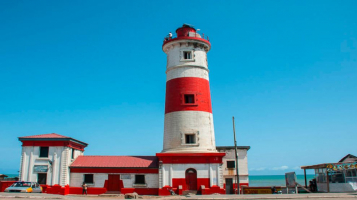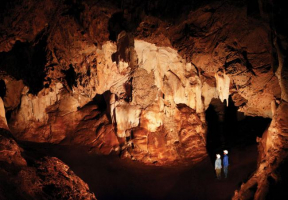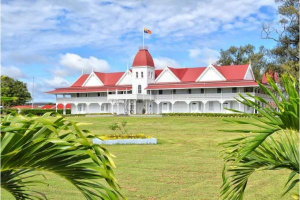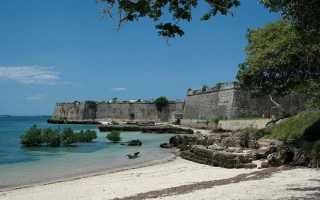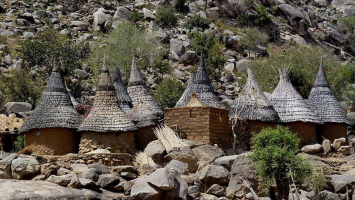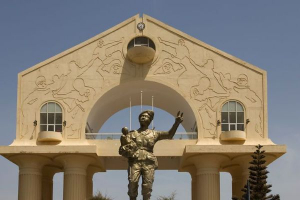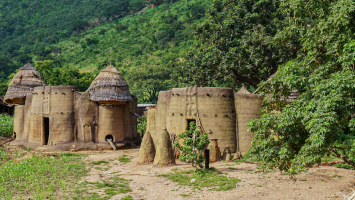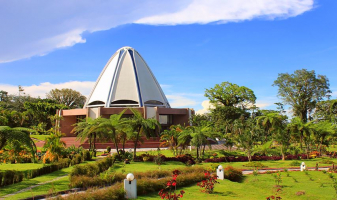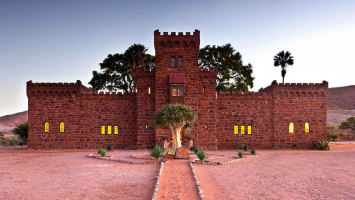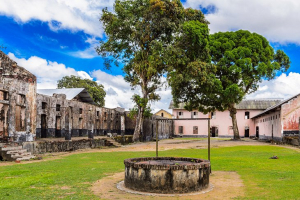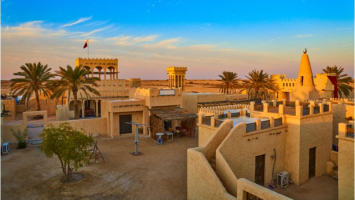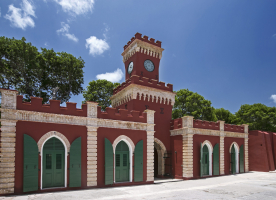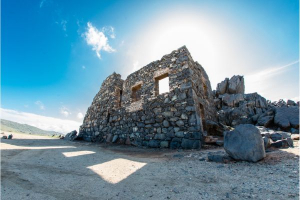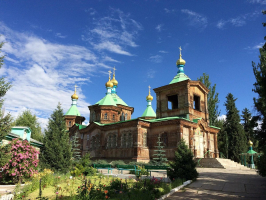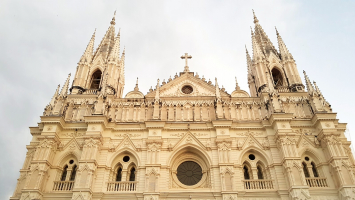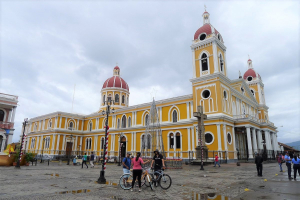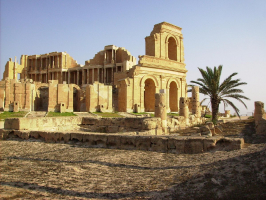Top 10 Most Famous Historical Sites in Pakistan
It's no doubt that Pakistan is a history lover's paradise. There have been various civilizations and faiths that have existed here, and the land has been ... read more...populated for millennia. Even if you've never been a fan of history, entering any of the country's historical sites is bound to change your view. Here is the list of the 10 most famous historical sites in Pakistan.
-
Begum Shahi Mosque, also known as The Mosque of Mariyam Zamani Begum, is an early 17th-century mosque in Lahore, Punjab, Pakistan. During the reign of Mughal Emperor Jahangir, the mosque was built in honor of his mother, Wali Nimat Mariam-uz-Zamani Begum Sahiba, the primary consort of Emperor Akbar, between 1611 and 1614.
It is Lahore's first surviving Mughal-era mosque, and it influenced the design of the bigger Wazir Khan Mosque a few decades later. According to one of the inscriptions on the mosque, the Dowager Empress Wali Nimat Mariam-uz-Zamani Begum Sahiba personally laid the foundation in 1611.
During the Sikh era in Lahore, Ranjit Singh converted this mosque into a gunpowder factory, for which it was renamed Barudkhana Wali Masjid ("Gunpowder Mosque"). When the British Raj began in Lahore in 1850, the edifice was given to Muslims, who renovated it as a mosque.
It illustrates a transitional period in architecture, including Mughal influences as well as elements from the preceding Pashtun Lodi Dynasty which governed the region. The older Lodi style is represented by short domes and wide arches, while the Mughal style is shown by the mosque's balconies, side rooms, and ornamentation.
Begum Shahi Mosque contains Lahore's first five-bay prayer hall, which was eventually adopted by all subsequent Mughal mosques such as the Wazir Khan Mosque and Badshahi Mosque. The central bay of the mosque is designed in the Persian Char Taq style, with one lesser dome on either side. The mosque originally had three gateways, two of which remain.
The prayer chamber in the mosque measures 130.5 feet long and 34 feet broad. The hall is divided into five bays, each of which is capped by one of three arches, the greatest of which is over the center bay. The mosque also boasts a 128-by-82-foot courtyard with an ablution pool for Islamic ceremonial washing. The mosque's interior has Mughal fresco art, which would serve as a model for the ornate and enormous frescoes at the Wazir Khan Mosque a few decades later. The majority of the frescoes are flowery in style, and the calligraphy on the walls incorporates non-Quranic material, making it the first mosque in Lahore to do so.
Location: Lahore, Punjab, Pakistan
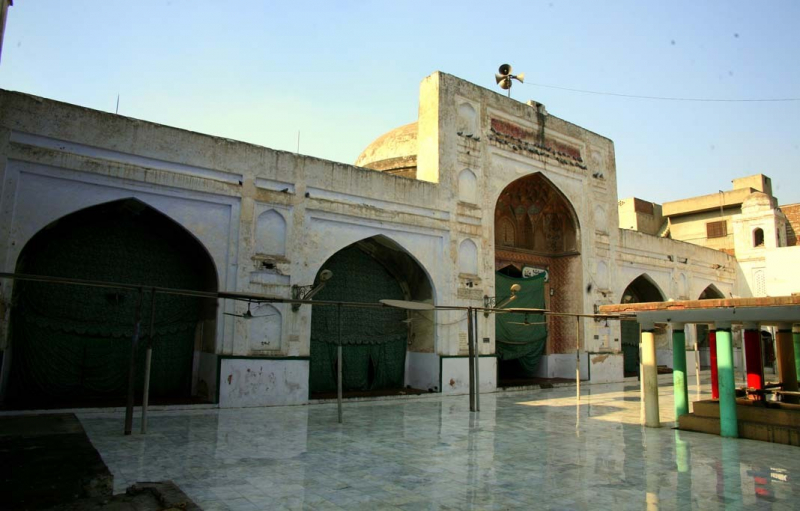
in.worldorgs.com 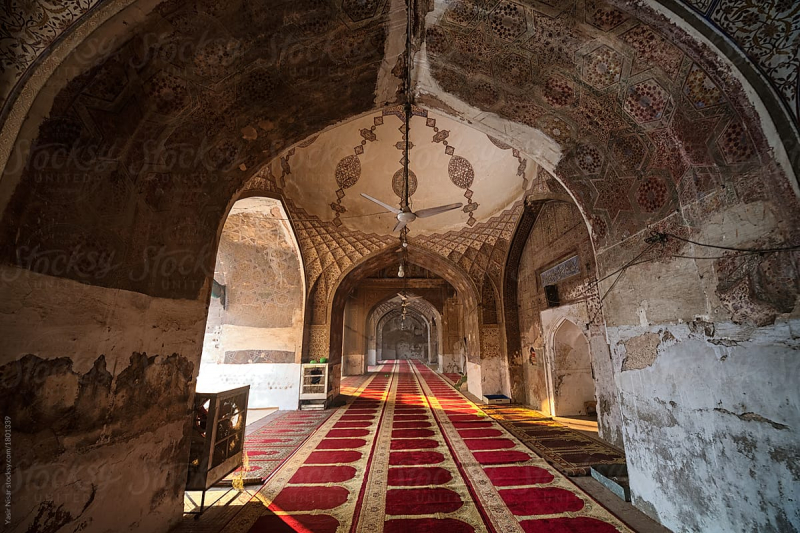
stocksy.com -
Mohenjo-daro is an archaeological site in Pakistan's Sindh region. It was one of the major communities of the ancient Indus Valley Civilisation, built circa 2500 BCE, with characteristics such as uniform bricks, street grids, and covered sewerage systems. It was one of the world's first great towns, existing with ancient Egypt, Mesopotamia, Minoan Crete, and Norte Chico. As the Indus Valley Civilization faded in the 19th century BCE, Mohenjo-daro was abandoned, and the site was not rediscovered until the 1920s. Significant excavation has taken place at the city's site since it was named a UNESCO World Heritage Site in 1980.
Mohenjo-daro was constructed about the 26th century BCE. It was one of the greatest towns of the ancient Indus Valley Civilization, also known as the Harappan Civilization, which arose from the prehistoric Indus civilisation circa 3,000 BCE. The Indus Civilization spanned much of what is now Pakistan and North India, spanning westwards to the Iranian border, south to Gujarat in India, and northwards to a Bactria outpost, with significant urban sites at Harappa, Mohenjo-daro, Lothal, Kalibangan, Dholavira, and Rakhigarhi. Mohenjo-daro was the most advanced metropolis of its day, with incredible civil engineering and urban design. Mohenjo-daro was abandoned after the Indus civilization collapsed approximately 1900 BCE.
Mohenjo-daro was designed with rectilinear buildings organized on a grid plan. The majority were constructed of fired and mortared brick, with some incorporating sun-dried mud-brick and wooden superstructures. The covered area of Mohenjo-daro is estimated at 300 hectares.
Location: Larkana District, Sindh, Pakistan
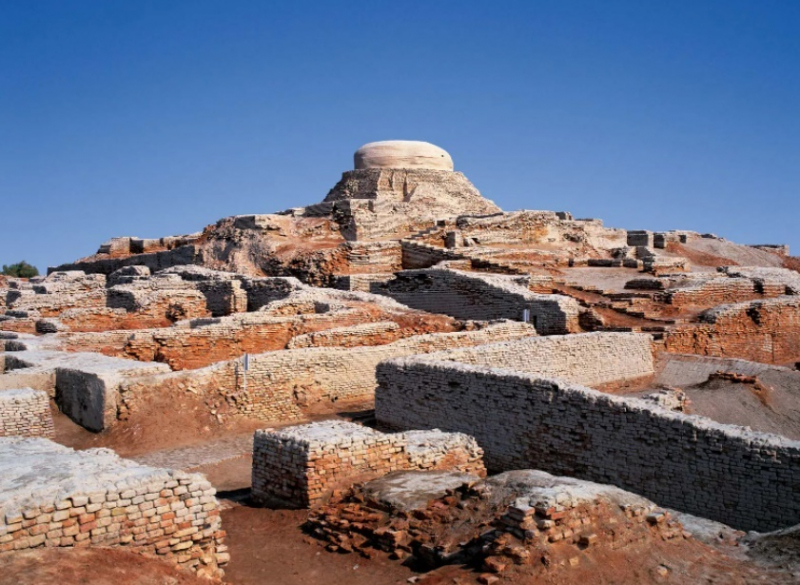
britannica.com 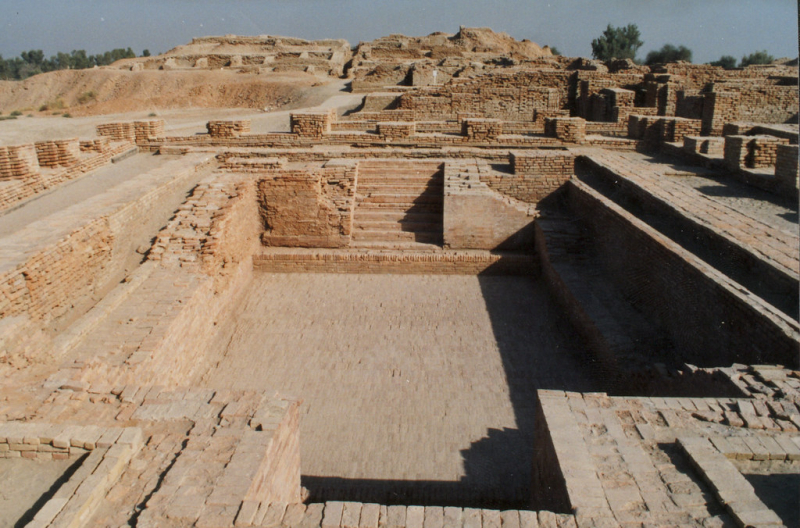
flickr.com -
The Rohtas Fort is a 16th-century stronghold near the city of Jhelum in Pakistan's Punjab province. The fort is one of the largest and most powerful on the Indian subcontinent. Rohtas Fort was never seized by force and has survived in remarkable condition.
Raja Todar Mal erected the fortification on Sher Shah Suri's orders. The fort is notable for its massive defensive walls and a number of colossal gates. In 1997, UNESCO designated Rohtas Fort as an "exceptional example of the Muslim military architecture of Central and South Asia".
The fort is located around eight kilometers south of the Grand Trunk Road. It is located around 16 kilometers northwest of Jhelum, near the city of Dina. It is around 3 kilometers from Khukha. The medieval Shahrah-e-Azam road previously ran along the fort's outer northern wall.
The Tilla Jogian Range's Rohtas Fort was built on a hill overlooking a canyon where the Kahan River meets a seasonal stream called Parnal Khas. The fort towers over its surroundings by about 300 feet (91 meters). It stands 2,660 feet (810 meters) above sea level and spans 70 hectares.
Rohtas Fort encompasses 70 hectares and is surrounded by four kilometers of walls fortified by 68 bastion towers and twelve gates. The fort is an irregularly formed triangle that follows the slopes of the hill on which it was built. A 533-meter (1,749-foot) wall separates the northwest corner of the fort from the rest of the fort. The enclosed area was more highly guarded and used as a stronghold for elites. Much of the fort's prominent features are contained within the enclosed area. The Langar Khani entrance of the fort enters into the citadel, however, it is essentially a trap in a direct line of fire from the fort's bastions.
The massive fort could house 30,000 troops. It could have withstood a huge siege due to its location, thick walls, trap gates, and three stepwells, but it was never ever besieged. The only palace in the fort is the Raja Man Singh Haveli, which is located on the citadel's highest point. The fort covers an area of 3200 canals.
Sher Shah Suri, the founder of the Sur Empire, commissioned the construction of the fort. Its purpose was to thwart the ambitions of Mughal emperor Humayun, who had been exiled to Persia following his defeat at the Battle of Kannauj. The fort was built in a strategic location between the mountains of Afghanistan and the plains of Punjab to keep the Mughal emperor from coming to India.
Location: Rohtas City, Dina Jhelum District, Punjab, Pakistan
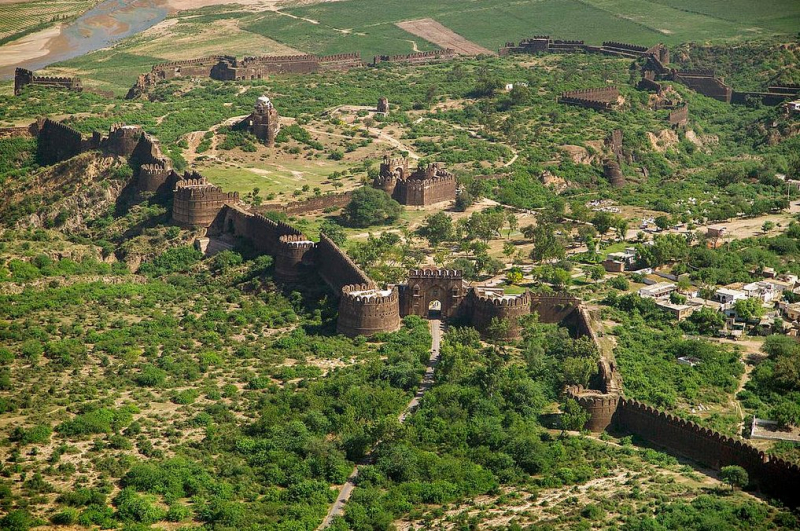
twitter.com 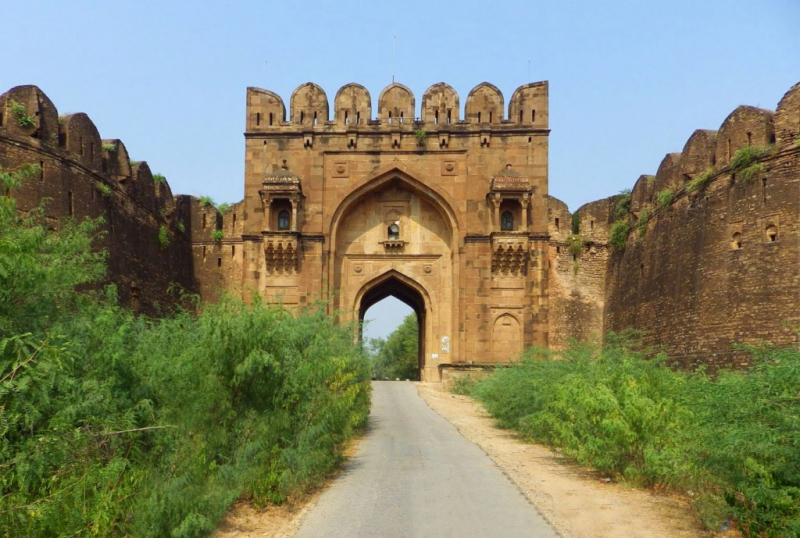
sitara.com -
Taxila (literally "cloven rock") is a city in Rawalpindi District, Punjab, Pakistan, located in the Taxila Tehsil. It is located approximately 25 kilometers (16 miles) northwest of Rawalpindi-Islamabad and just south of Haripur District in Khyber Pakhtunkhwa.
Taxila was an important city in ancient India, located on the eastern bank of the Indus River at the crossroads of the Indian subcontinent and Central Asia. It was established approximately 1000 BCE. Some Taxila remains date from the 6th century BCE Achaemenid Empire, which was followed by the Mauryan Empire, Indo-Greek, Indo-Scythian, and Kushan Empire periods. Taxila has changed hands numerous times over the years due to its strategic location, with many empires striving for dominance.
When the huge old trade routes connecting these regions became obsolete, the city faded into obscurity and was eventually destroyed by the nomadic Hunas in the fifth century. In the mid-nineteenth century, renowned archaeologist Sir Alexander Cunningham unearthed the Taxila remains. Taxila was designated a UNESCO World Heritage Site in 1980.
According to some sources, the University of Ancient Taxila was one of the world's first universities. Others do not consider it a university in the modern sense, because the teachers who lived there may not have been official members of specific colleges, and there did not appear to be purpose-built lecture halls and residential quarters in Taxila, in contrast to the later Nalanda University in eastern India.Taxila was named one of 12 worldwide sites most "on the verge" of catastrophic loss and harm in a 2010 report by the Global Heritage Fund, citing insufficient management, development pressure, looting, and war and violence as key risks. However, the government has made major preservation efforts since then, resulting in the site being designated as "well-preserved" by various international publications. The site is one of the most famous historical sites in Pakistan, attracting up to one million visitors every year, thanks to substantial preservation efforts and care.
Location: Rawalpindi, Punjab, Pakistan
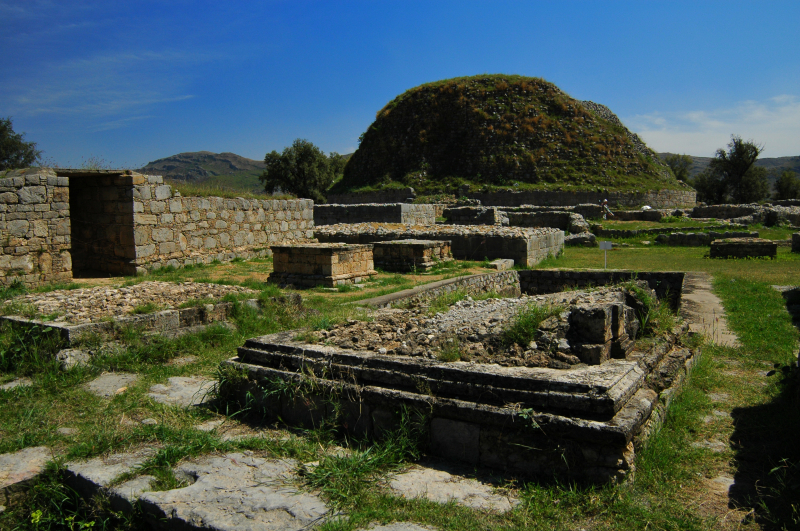
en.wikipedia.org 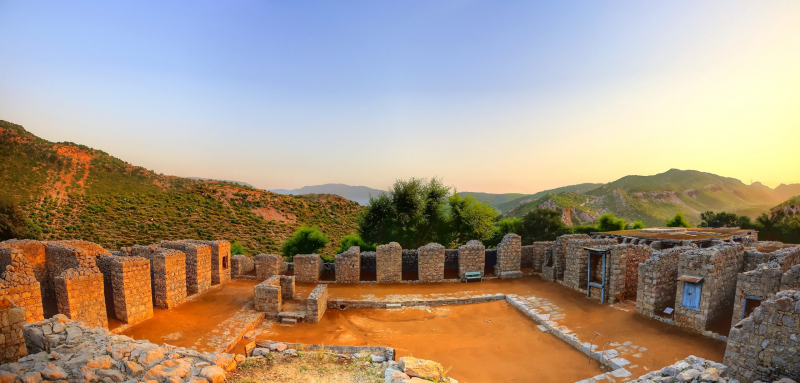
trek.pk -
The Wazir Khan Mosque is a 17th-century mosque in Lahore, Pakistan's capital and the provincial capital of Punjab. The mosque was built during the time of Mughal Emperor Shah Jahan as part of a larger complex that included the adjoining Shahi Hammam facilities. The Wazir Khan Mosque's construction began in 1634 C.E. and was completed in 1641. It is on the UNESCO Tentative List of World Heritage Sites.
Wazir Khan Mosque, often regarded as the most ornately adorned Mughal-era mosque, is famed for its exquisite faience tile work known as kashi-kari, as well as its interior surfaces, which are almost totally ornamented with beautiful Mughal-era murals. The Aga Khan Trust for Culture and the Government of Punjab have been overseeing the substantial restoration of the mosque since 2009, with funding from the governments of Germany, Norway, and the United States.
The mosque was commissioned by the Mughal Court's head physician, Hakeem Ilam-ud-din Ansari, also known as Wazir Khan. The site had previously been inhabited by an ancient shrine to the saint prior to the erection of the Wazir Khan Mosque. Wazir Khan's mosque took the place of the ancient Maryam Zamani Mosque as the major mosque in Lahore for congregational Friday prayers.
The mosque was part of a larger complex that comprised a row of shops normally dedicated to calligraphers and bookbinders, as well as the town square in front of the mosque's main entrance. The mosque also rented out space on the mosque's northern and eastern façades to different types of merchants and operated the adjoining Shahi Hammam. The proceeds from these sources were to be used as a waqf, or endowment, for the mosque's upkeep.
The mosque was built between 1634 and 1635 during the reign of Mughal Emperor Shah Jahan and took about seven years to finish. Wazir Khan Mosque is well-known for its complex and vast ornamentation. The mosque is erected on an elevated plinth, with the main entrance facing Wazir Khan Chowk. The Wazir Khan Mosque's outside circumference spans 279 feet (85 meters) by 159 feet (48 meters), with the long axis parallel to the Shahi Guzargah. It was constructed with kankar lime bricks.
Location: Lahore, Punjab, Pakistan
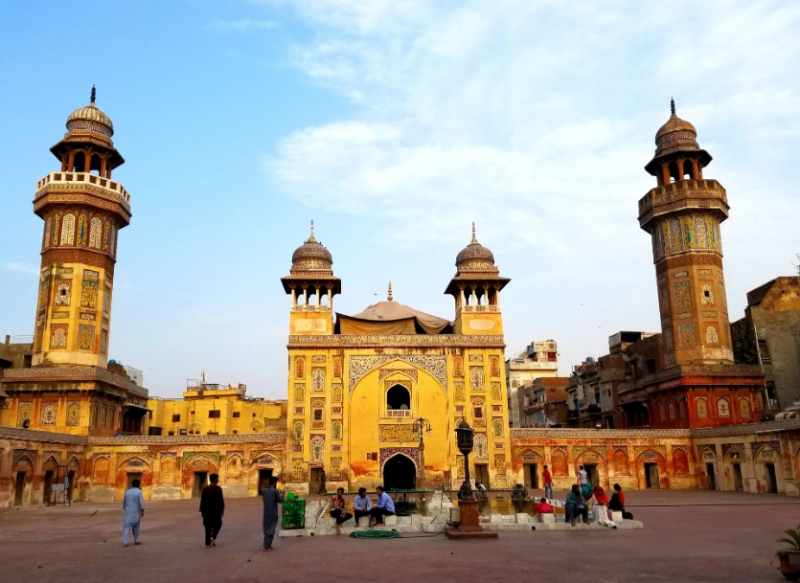
tayonthemove.com 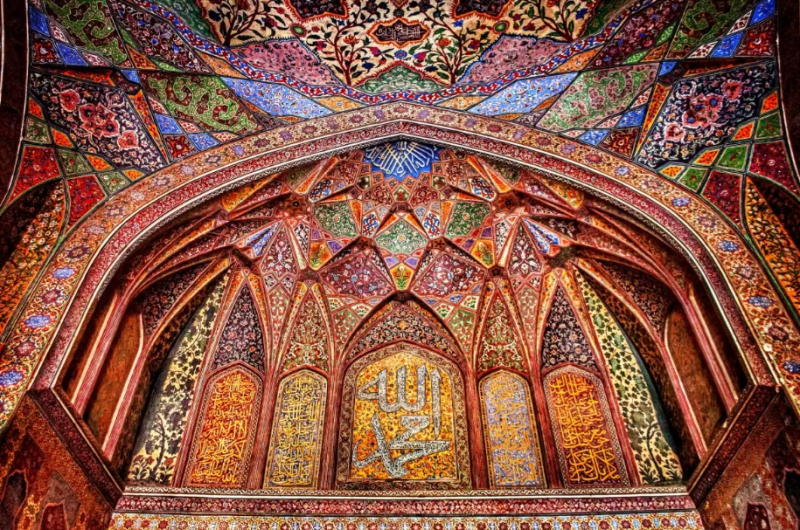
windsweptwords.com -
The Shri Katas Raj Temples are a collection of Hindu temples linked together by walkways. The temple complex is built around Katas Pond, which Hindus consider to be sacred. The complex is located in Pakistan's Punjab province's Potohar Plateau region. The temples are close to the town of Choa Saidanshah and the M2 Motorway.
According to the Puranas, the temple's pond was produced by Shiva's teardrops when he wandered the Earth inconsolably after the loss of his wife Sati. The pond covers two kanals and 15 marlas and has a maximum depth of 20 feet.
The Katas site is home to the Satgraha, a collection of seven ancient temples, the remains of a Buddhist stupa, five additional medieval temples, and Havelis strewn around a Hindu-honored pond.
Katas' temples are generally built on square platforms. The sub-shrines' elevation appears to form a succession of cornices with short rows of pillars, capped by a ribbed dome. The seven temples were designed in the style of Kashmiri temples, with dentils, fluted pillars, trefoil arches, and pointed rooflines.
The Shri Katas Raj Temples are mentioned in the Hindu epic poem, the Mahabhrata, and are usually thought to represent the location where the Pandava brothers spent a considerable portion of their exile. It is also thought by Hindus to be the location of the brothers' riddle contest with the Yakshas, as related in the Yaksha Prashna. Another legend has it that the Hindu deity Krishna built the temple and installed a hand-carved inside.
Lal Krishna Advani, India's former deputy prime minister, visited the temples in 2005. The Pakistani government began repair work on the temples in 2006, with additional upgrades announced in 2017.
Location: Choa Saidanshah, Punjab, Pakistan
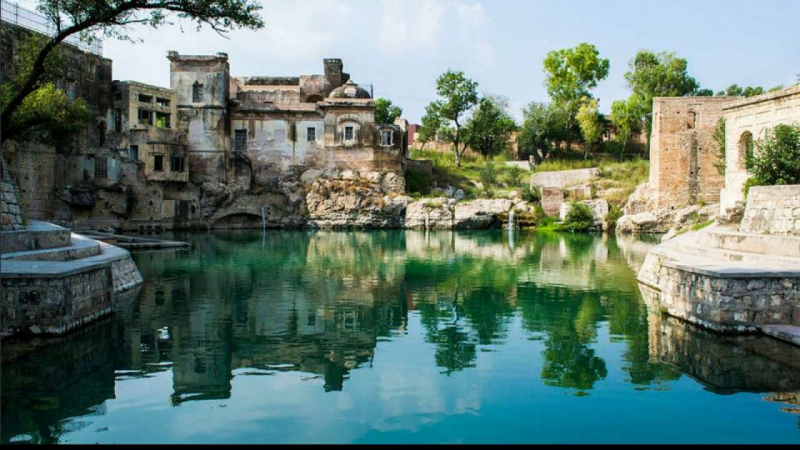
dnaindia.com 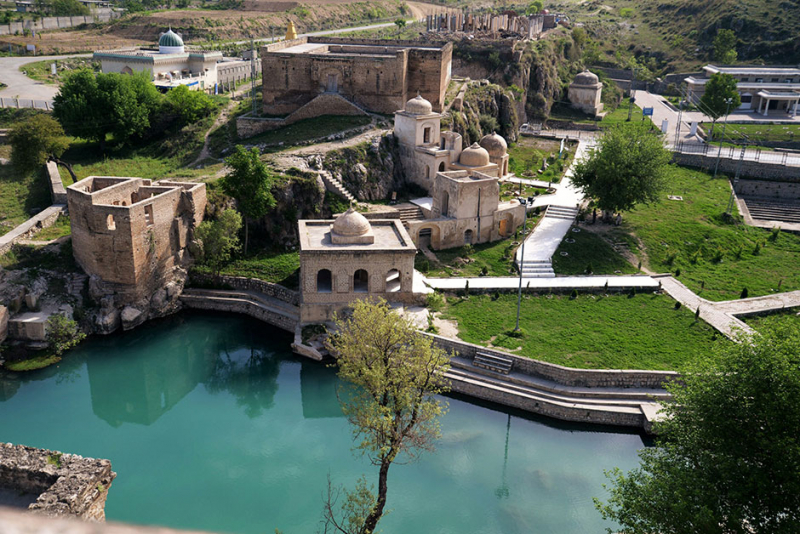
tribune.com.pk -
The Lahore Fort is a fortress in the Pakistani city of Lahore. The fort is positioned at the northern extremity of Lahore's walled city and covers an area of more than 20 hectares. It is home to 21 significant monuments, some of which date back to the reign of Emperor Akbar. The Lahore Fort is famous for being virtually fully rebuilt in the 17th century, at the height of the Mughal Empire's magnificence and opulence.
Though the Lahore Fort site has been occupied for millennia, the oldest trace of a fortified construction there was an 11th-century mud-brick fort. The present Lahore Fort was built in 1566 during the time of Emperor Akbar, who favored a syncretic architectural style that combined Islamic and Hindu features. The Shah Jahan period additions are distinguished by exquisite marble with inlaid Persian floral decorations, while the fort's grand and famous Alamgiri Gate was built by Aurangzeb, the last of the great Mughal Emperors, and confronts the renowned Badshahi Mosque.
After the Mughal Empire fell, Lahore Fort became the palace of Emperor Ranjit Singh, the founder of the Sikh Empire. The Sikhs made various improvements to the fort. After the East India Company seized Punjab following their victory against the Sikhs at the Battle of Gujrat in February 1849, it passed to their hands. The fort was designated a UNESCO World Heritage Site in 1981 for its "outstanding repertoire" of Mughal architecture from the era when the empire was at its creative and aesthetic pinnacle.
Location: Lahore, Pakistan
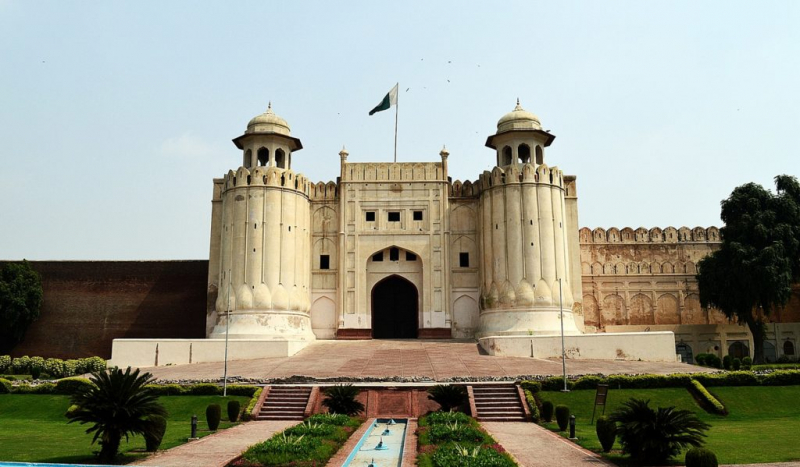
discoveryair.pk 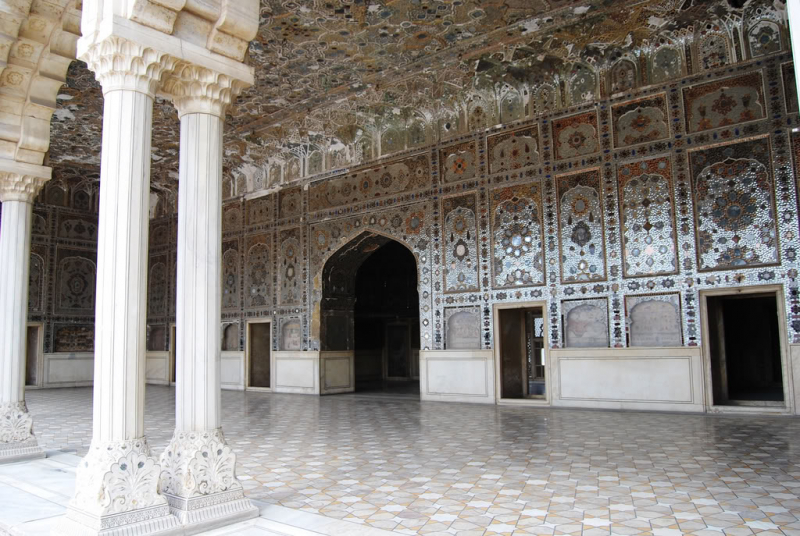
thehistoryhub.com -
Ranikot Fort is a medieval Talpur fort near Sann in Sindh's Jamshoro District. Ranikot Fort, also known as The Great Wall of Sindh, is thought to be the largest fort in the world, with a diameter of around 32 kilometers (20 mi). The ramparts of the fort have been compared to the Great Wall of China.
Archaeologists believe it was built in the 17th century, although Sindh archaeologists now concur that some of the current structures were renovated in 1812 at a cost of 1.2 million rupees by the Talpur dynasty (Sindh Gazetteer, 677).
Ranikot Fort is massive, stretching 31 kilometers (19 miles) and connecting numerous dismal mountains of the Kirthar ranges along contours. The entire fort building is made of stone and lime mortar. The fort is built in a zigzag pattern, with four rhomboid-shaped entry gates. Sann Gate, Amri Gate, Shah-Pere Gate, and Mohan Gate are the four gates. The Sann river crosses two of the gates diagonally; the first gate is on the western side and is bordered by the river water, making it difficult to reach. The southern entrance gate has two doors. There are two niches within the gates with floral decoration and carved stones. The Sann gate is beautifully intact and maybe climbed to reach the fort's peak from both sides for a scenic perspective of the surrounding area. This gate also serves as the entry to the Meeri.
The Pakistan National Commission proposed the property for UNESCO World Heritage designation in 1993, and it has since been on the tentative list of UNESCO World Heritage Sites. As one of the most famous historical sites in Pakistan, Ranikot Fort is protected as a historical site under the Antiquities Act of 1975.
Location: Jamshoro District, Sindh, Pakistan
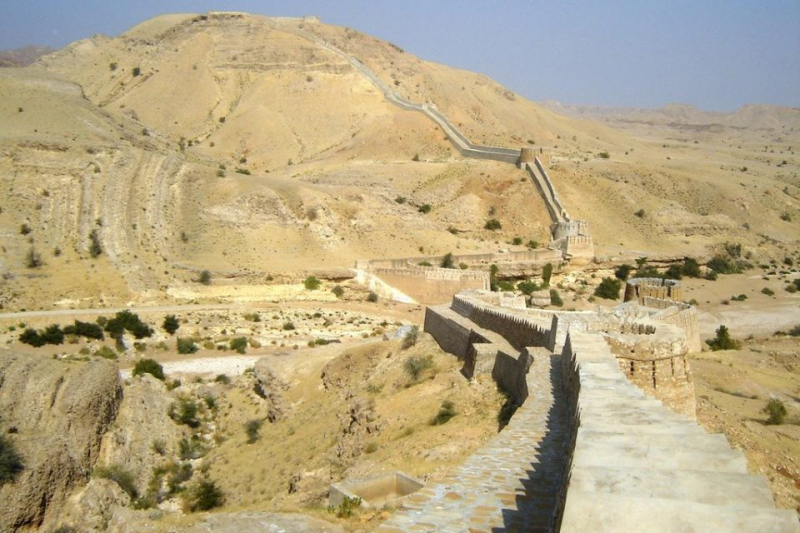
pakistanhc.lk 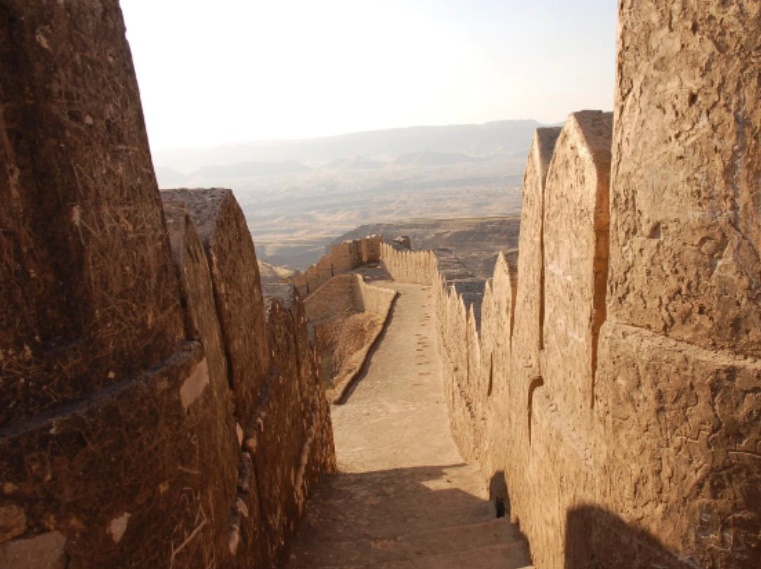
dastaangoi.com -
Takht-i-Bahi is an Indo-Parthian archaeological site in Mardan, Khyber-Pakhtunkhwa, Pakistan, of an ancient Buddhist monastery. The location is regarded as one of the most important Buddhist relics in all of what was once Gandhara, and it has been exceptionally well-preserved.
Regarded as one of the most famous historical sites in Pakistan, the monastery was established in the first century CE and remained in operation until the seventh century. Archaeologists consider the complex to be particularly indicative of the architecture of Buddhist monastic complexes from the time period. In 1980, Takht-i-Bahi was designated a UNESCO World Heritage Site.
The Takht-i-Bahi complex is divided into four sections: the Stupa Court, a cluster of stupas located in a central courtyard; the monastic chambers, which consist of individual cells arranged around a courtyard, assembly halls, and a dining area; a temple complex, which consists of stupas and is similar to the Stupa Court, but of later construction; and the Tantric monastic complex, which consists of small, dark cells with low openings and may have Other structures on the property may have been used as houses, meeting rooms, or for secular purposes. The buildings on the site are all made of native stone and mortared with lime and mud.
Location: Mardan, Khyber Pakhtunkhwa, Pakistan
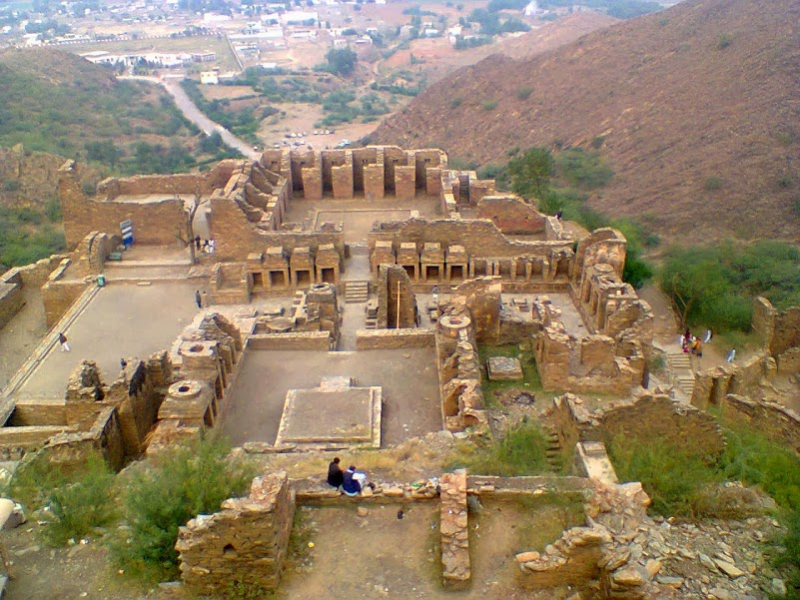
commons.wikimedia.org 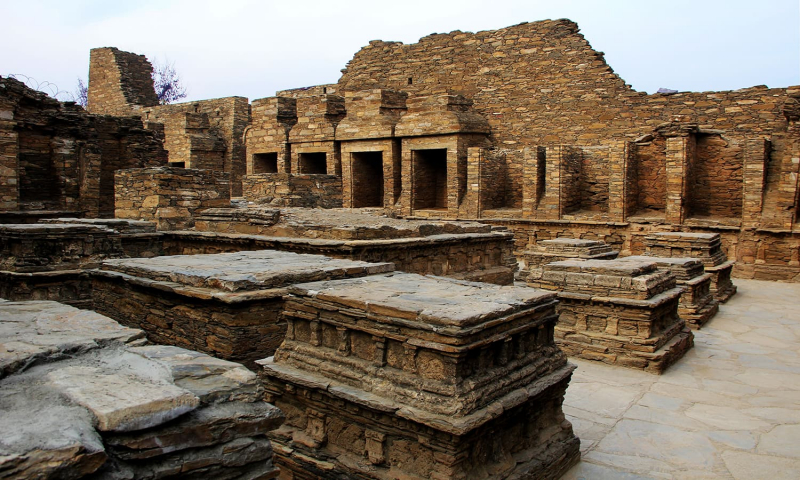
thewttc.net -
Hiran Minar is a Mughal-era complex from the early 16th century in Sheikhupura, Pakistan's Punjab region. The compound was created on the grounds of a game reserve in memory of Mughal Emperor Jahangir's favorite antelope, Mansraj. The Emperor is famous for his love of nature, and his complex represents the Mughal link between humans, animals, and hunting.
The Hiran Minar is located near Sheikhupura, approximately 40 kilometers northwest of Lahore. The complex is next to the Sheikhupura Fort, which was also built in the early 17th century. Both places may be reached from Lahore through the M2 Motorway, which connects the city to Islamabad.
The 110-meter-tall Jahangir-era minaret was built in 1606 C.E. as a burial marker for the emperor's pet antelope, Minraj. A tribute to the pet antelope is engraved on the minar's sides. At the heart of the project is a large rectangular water-tank pool measuring 229 meters by 273 meters. The pool's centerpiece is an octagonal pavilion built during Shah Jahan's reign. The two-story pavilion is capped by a rooftop chhatri that served as a stone gazebo. The pavilion's architecture is identical to Emperor Humayun's Sher Mandal at Delhi's Purana Qila. A causeway also spans the pool, connecting the minaret to the pavilion along an axis that passes via a gateway. The antelope's tomb and the unusual water collection system are distinctive aspects of this site. A tiny, square building and a subsurface water collecting system served the water tank at each corner of the tank (about 750 by 895 feet (273 m) in size; only one of these water systems is now widely exposed.
Hiran Minar was built in a hunting reserve used by the Mughal royals during the time of Mughal Emperor Jahangir. The reserve was constructed amid a scrub forest to provide Mughal monarchs with a sense of semi-wilderness near the imperial city of Lahore. The wild reserve was turned into a park where tourists may enjoy hunting.
Location: Sheikhupura, Punjab, Pakistan
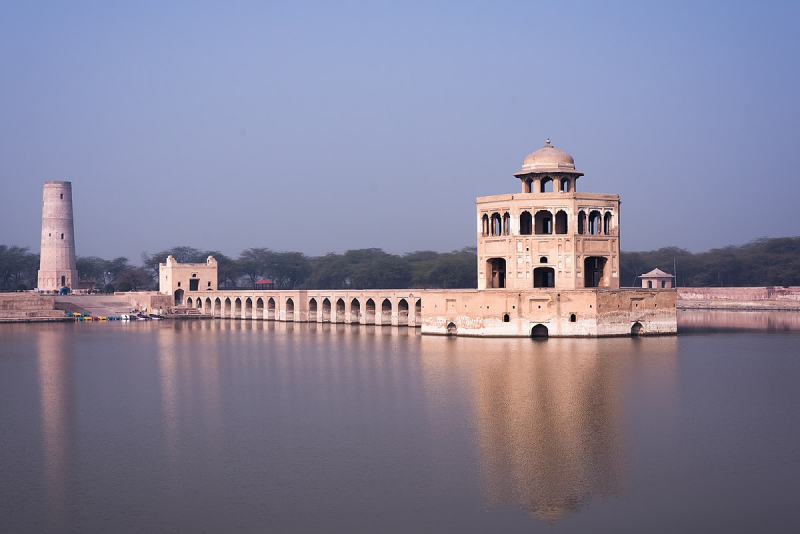
commons.wikimedia.org 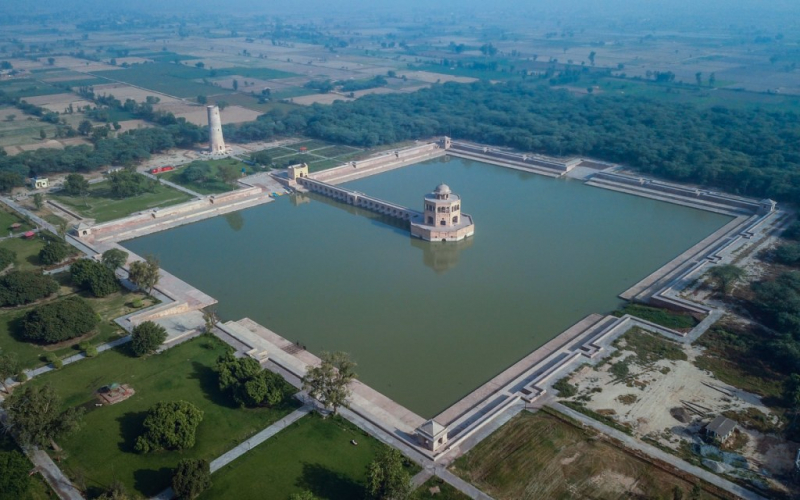
zameen.com












